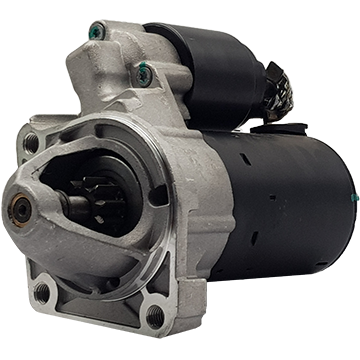Unlocking the Power of Engines: A Comprehensive Guide to Performance and Performance
Recognizing the complex mechanics of engines is essential for both performance lovers and daily vehicle drivers. The responses might redefine our approach to engine performance and efficiency in means that are both informing and essential.
Recognizing Engine Fundamentals
What constitutes the fundamental technicians of an engine? At its core, an engine is a machine designed to convert fuel into power via a collection of controlled explosions or burning processes. The primary components consist of the cylinder, piston, crankshaft, camshaft, and shutoffs. The cylinder acts as the chamber where burning occurs, while the piston relocates within the cylinder to transform the energy from combustion right into linear activity (ford fiesta engine).
The crankshaft then transforms this direct movement into rotational energy, which inevitably powers the vehicle. The camshaft controls the opening and closing of the valves, regulating the consumption of air and gas and the expulsion of exhaust gases. Furthermore, the engine relies upon a carefully calibrated fuel-air mix, ignition system, and cooling down system to ensure optimum performance and efficiency.
Comprehending engine fundamentals also includes identifying the value of engine cycles, such as the four-stroke cycle, which consists of consumption, compression, exhaust, and power strokes. Each stage is critical in making sure the engine functions smoothly and properly. Mastery of these essential technicians prepares for discovering much more intricate engine characteristics and efficiency metrics, crucial for maximizing both power result and efficiency.
Key Performance Metrics
Key performance metrics are crucial for evaluating an engine's performance and power result, giving important insights for both suppliers and customers. These metrics function as benchmarks for engine performance, enabling for informed decisions in design, acquiring, and manufacturing.
One of the main metrics is horsepower, which measures the engine's ability to do job over time. Torque, measured in pound-feet, is another vital metric that indicates the engine's rotational force, straight affecting acceleration and towing capability. Fuel performance, commonly gauged in miles per gallon (MPG) or liters per 100 kilometers (L/100km), assesses how successfully the engine transforms gas right into movement, impacting functional expenses and ecological factors to consider.
Furthermore, thermal efficiency actions exactly how well an engine transforms gas energy into helpful work, disclosing understandings right into energy losses mainly through warmth. Discharge degrees, including CO2 and NOx, are also essential, showing the engine's environmental influence and compliance with governing standards.

Tuning Methods for Efficiency
Tuning methods play a substantial function in enhancing engine performance by enhancing performance metrics identified in earlier conversations (ford fiesta engine). Different methods exist to make improvements an engine, each contributing to enhanced gas economic situation and minimized emissions
One effective method is adjusting the air-fuel ratio, making certain the engine runs within the ideal combustion program. A leaner blend can boost gas effectiveness, but it has to be stabilized to protect against misfires or engine knock. In addition, reprogramming the engine administration system can recalibrate parameters such as ignition timing, which further enhances performance while important link maintaining power output.
Another essential strategy entails changing the intake and exhaust systems. Upgrading to high-performance air filters and exhaust headers can minimize back pressure, facilitating better air movement. This enables the engine to take a breath more freely, causing improved combustion effectiveness.
Moreover, the application of innovative tuning devices, like dyno screening, supplies exact data that makes it possible for targeted adjustments. Routinely monitoring these efficiency metrics makes sure that tuning initiatives yield the desired efficiency end results. Jointly, these techniques not only bolster engine performance but additionally add to long-lasting sustainability in engine operations.
Maintenance for Optimum Efficiency
Routine engine upkeep is important for attaining optimal performance and durability. A properly maintained engine not only operates effectively however also minimizes the danger of pricey fixings and break downs. Key components needing routine interest include oil, filters, belts, and ignition system.
Changing the engine oil at recommended intervals is essential, as oil lubricates relocating components and prevents overheating. Changing oil and air filters makes sure that impurities do not harm engine function. Overlooking these components can result in minimized effectiveness and prospective engine damages.
Additionally, inspecting and replacing worn belts and hose pipes is essential to avoid unexpected failures. Timing belts, in certain, should be changed according to the producer's timetable to stay clear of devastating engine damage.
Ignition system ought to also be inspected and changed as needed, since they play a crucial duty in ignition and fuel performance.
Future Patterns in Engine Technology
Accepting innovations in innovation, click to read the future of engine style is poised to change performance and performance throughout different applications. Hybrid and completely electrical powertrains are coming to be progressively traditional, offering reduced discharges and boosted gas efficiency.
Additionally, advancements in products scientific research are bring about lighter, more powerful parts that boost engine performance while decreasing power consumption. Advanced production methods, such as 3D printing, enable the creation of complex geometries that improve air flow and thermal administration, therefore enhancing combustion processes.
Furthermore, the combination website link of man-made knowledge and artificial intelligence is readied to change engine diagnostics and efficiency tuning. These innovations can analyze vast amounts of data in genuine time, enabling anticipating maintenance and customized performance improvements.
Conclusion
In final thought, opening the power of engines needs a comprehensive understanding of their auto mechanics and efficiency metrics. Implementing reliable tuning techniques and sticking to regular upkeep practices dramatically improve engine capacities.
Additionally, the engine counts on a thoroughly adjusted fuel-air mixture, ignition system, and cooling system to guarantee optimal efficiency and performance.
Recognizing engine basics likewise includes recognizing the significance of engine cycles, such as the four-stroke cycle, which consists of consumption, compression, power, and exhaust strokes. Proficiency of these fundamental mechanics lays the foundation for discovering a lot more complicated engine dynamics and efficiency metrics, essential for enhancing both power result and performance.

Welcoming improvements in modern technology, the future of engine design is poised to revolutionize efficiency and effectiveness throughout various applications.